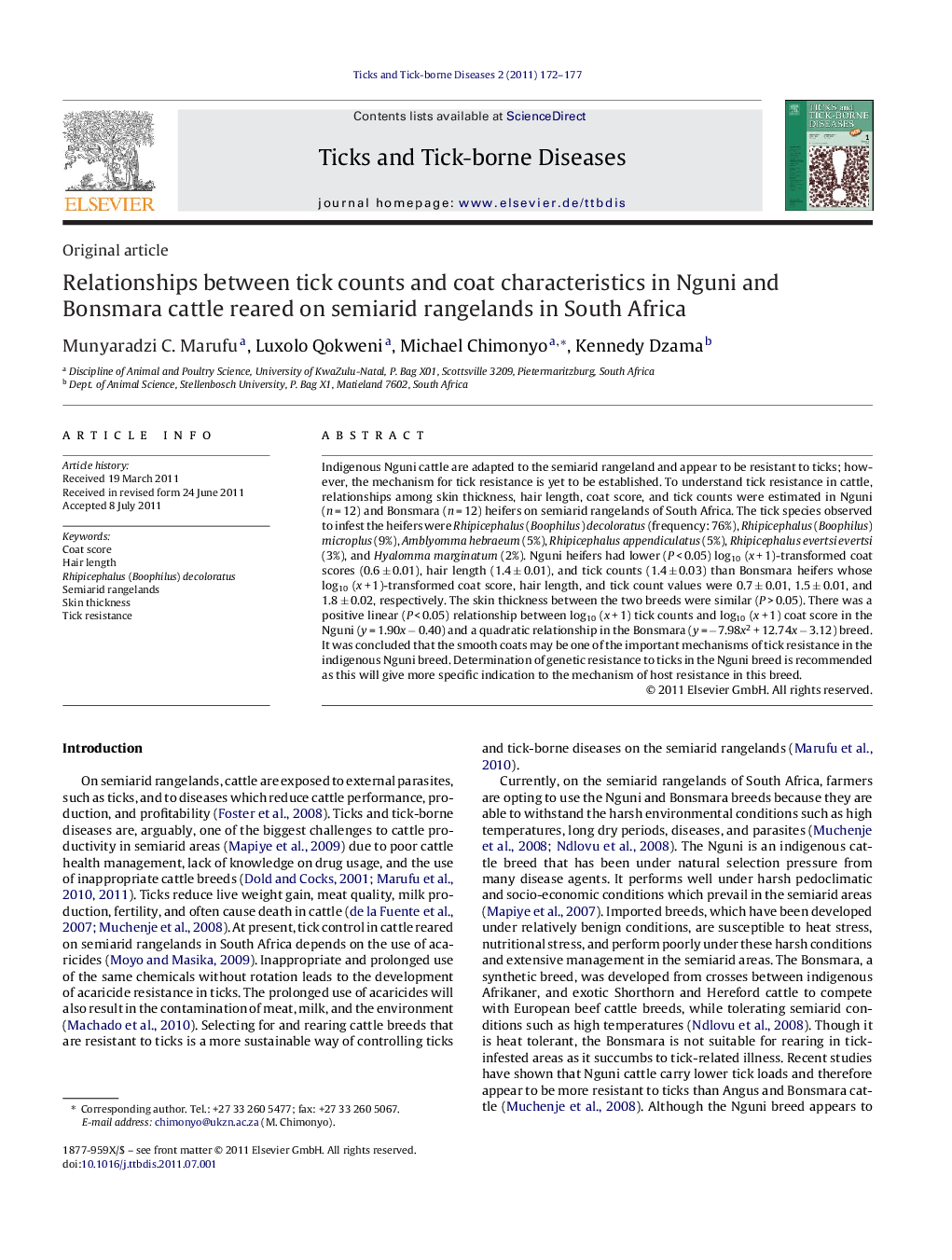| Article ID | Journal | Published Year | Pages | File Type |
|---|---|---|---|---|
| 2473957 | Ticks and Tick-borne Diseases | 2011 | 6 Pages |
Indigenous Nguni cattle are adapted to the semiarid rangeland and appear to be resistant to ticks; however, the mechanism for tick resistance is yet to be established. To understand tick resistance in cattle, relationships among skin thickness, hair length, coat score, and tick counts were estimated in Nguni (n = 12) and Bonsmara (n = 12) heifers on semiarid rangelands of South Africa. The tick species observed to infest the heifers were Rhipicephalus (Boophilus) decoloratus (frequency: 76%), Rhipicephalus (Boophilus) microplus (9%), Amblyomma hebraeum (5%), Rhipicephalus appendiculatus (5%), Rhipicephalus evertsi evertsi (3%), and Hyalomma marginatum (2%). Nguni heifers had lower (P < 0.05) log10 (x + 1)-transformed coat scores (0.6 ± 0.01), hair length (1.4 ± 0.01), and tick counts (1.4 ± 0.03) than Bonsmara heifers whose log10 (x + 1)-transformed coat score, hair length, and tick count values were 0.7 ± 0.01, 1.5 ± 0.01, and 1.8 ± 0.02, respectively. The skin thickness between the two breeds were similar (P > 0.05). There was a positive linear (P < 0.05) relationship between log10 (x + 1) tick counts and log10 (x + 1) coat score in the Nguni (y = 1.90x − 0.40) and a quadratic relationship in the Bonsmara (y = −7.98x2 + 12.74x − 3.12) breed. It was concluded that the smooth coats may be one of the important mechanisms of tick resistance in the indigenous Nguni breed. Determination of genetic resistance to ticks in the Nguni breed is recommended as this will give more specific indication to the mechanism of host resistance in this breed.
